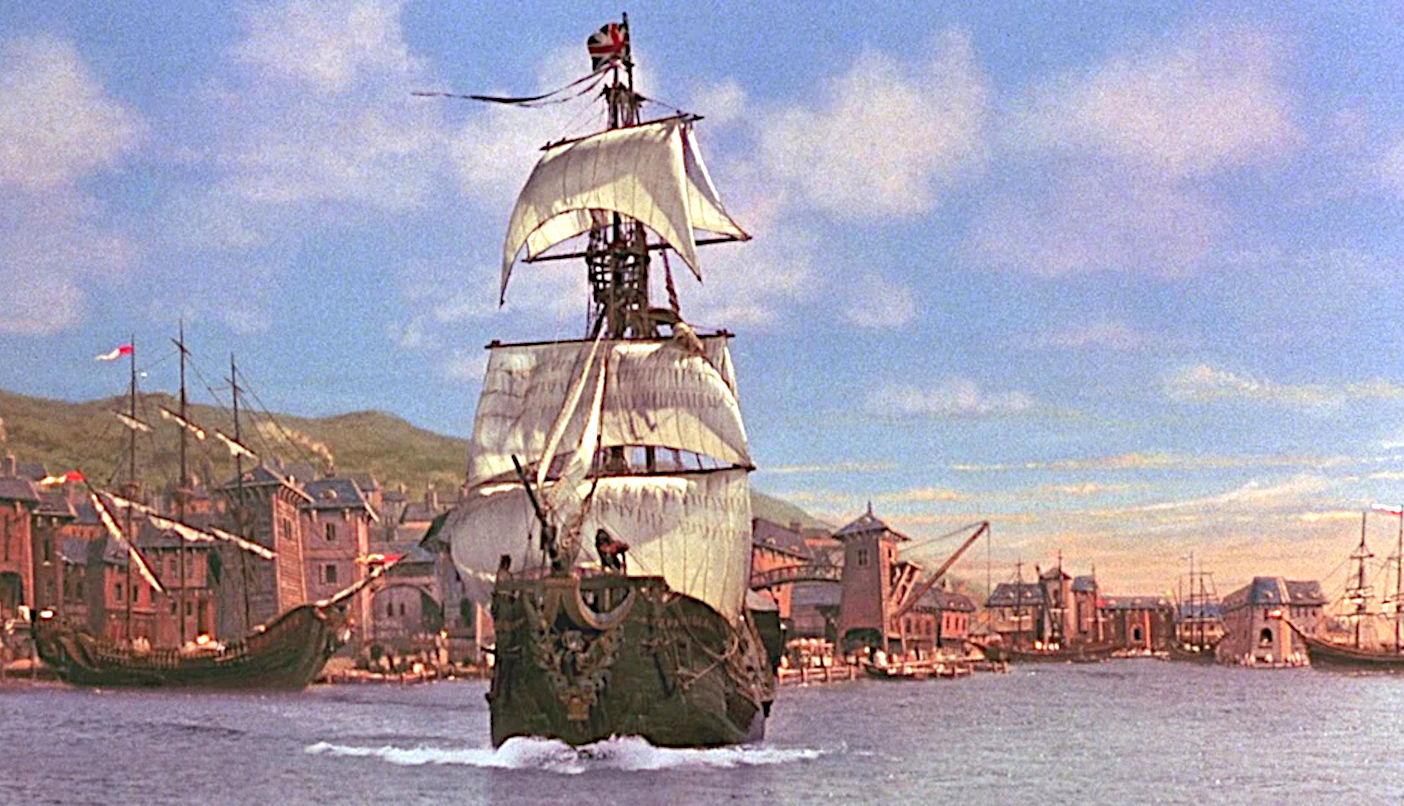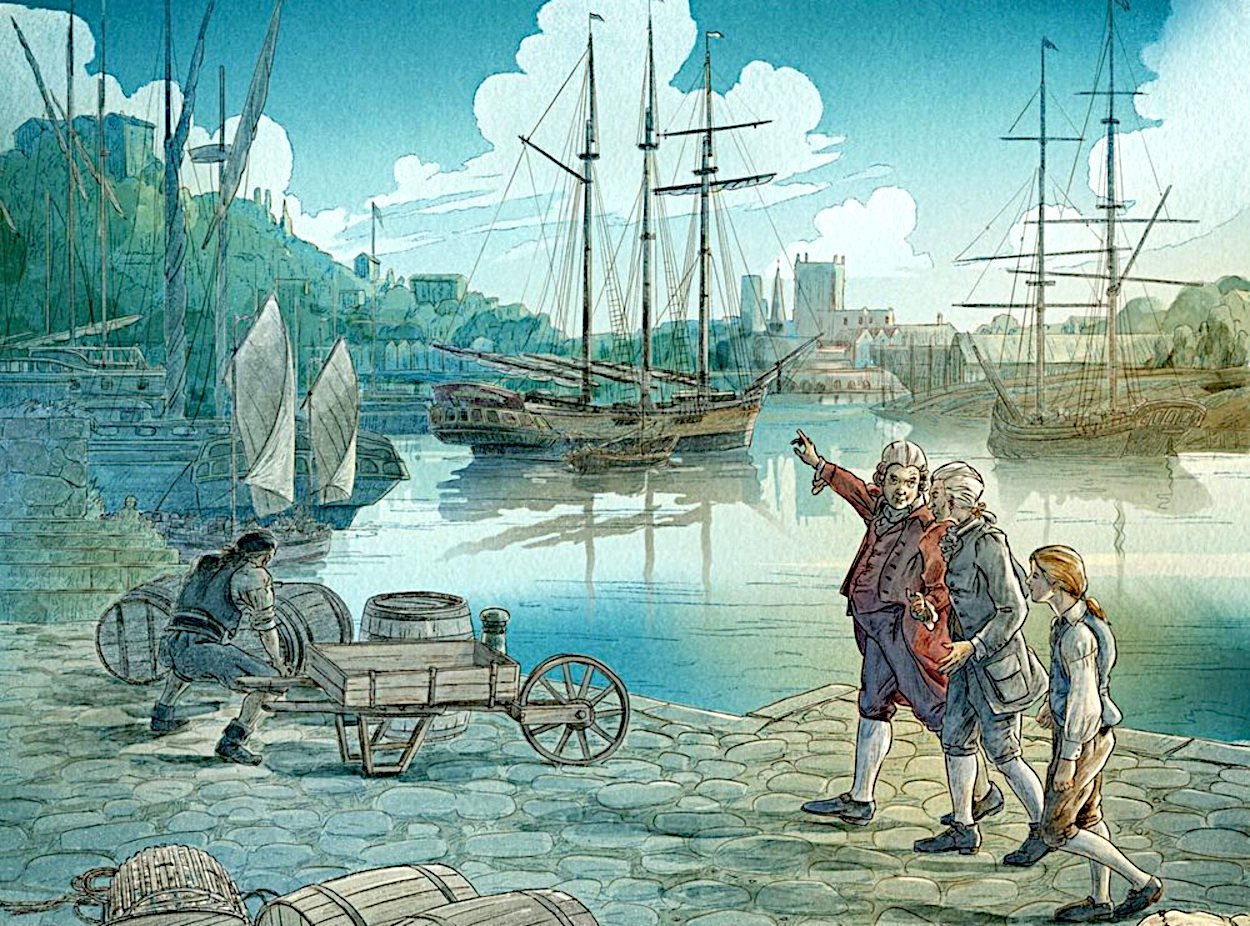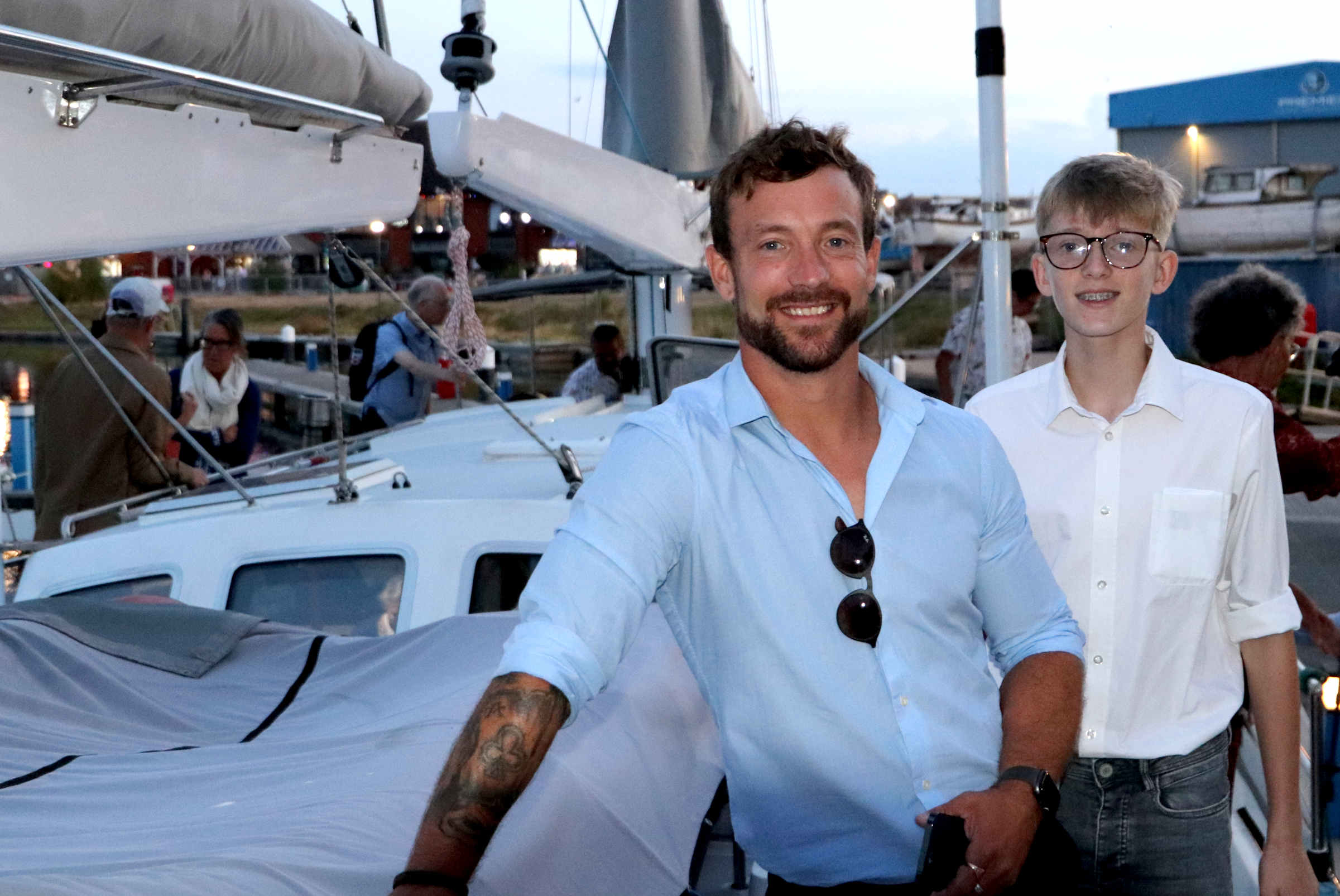|
THE HISPANIOLA
|
|
|
|
|
|
Cast of characters and vessels in the original Treasure Island novel
The Hispaniola is a schooner, a kind of sailing vessel with two masts (a foremast and a mainmast). The mainmast stands behind the foremast and is the taller of the two. The masts are tall pillars that hold up the sails. The word schooner derives from 'schoon,' which means to move smoothly and quickly. The ship was named after the Island of Hispaniola.
When Jim Hawkins presents the map of a treasure island to Squire Trelawney and Doctor Livesey, their first step is to figure out how to cross the Atlantic Ocean to get to the Caribbean Sea. Trelawney takes the lead, hiring a crew and seeking out an appropriate ship for their trip to Skeleton Island. From Bristol, Trelawney writes to the Doctor: ''The ship is bought and fitted. She lies at anchor, ready for sea. You never imagined a sweeter schooner - a child might sail her--two hundred tons; name, Hispaniola.'' Jim Hawkins joins the crew of the Hispaniola as a cabin boy.
A schooner is a type of sailing vessel defined by its rig: fore-and-aft rigged on all of two or more masts and, in the case of a two-masted schooner, the foremast generally being shorter than the mainmast. A common variant, the topsail schooner also has a square topsail on the foremast, to which may be added a topgallant. Differing definitions leave uncertain whether the addition of a fore course would make such a vessel a brigantine. Many schooners are gaff-rigged, but other examples include Bermuda rig and the staysail schooner.
The schooner rig was used in vessels with a wide range of purposes. On a fast hull, good ability to windward was useful for privateers, blockade runners, slave ships, smaller naval craft and opium clippers. Packet boats (built for the fast conveyance of passengers and goods) were often schooners. Fruit schooners were noted for their quick passages, taking their perishable cargoes on routes such as the Azores to Britain. Some pilot boats adopted the rig. The fishing vessels that worked the Grand Banks of Newfoundland were schooners, and held in high regard as an outstanding development of the type. In merchant use, the ease of handling in confined waters and smaller crew requirements made schooners a common rig, especially in the 19th century. Some schooners worked on deep sea routes.
In British home waters, schooners usually had cargo-carrying hulls that were designed to take the ground in drying harbours (or, even, to unload dried out on an open beach). The last of these once-common craft had ceased trading by the middle of the 20th century. Some very large schooners with five or more masts were built in the United States from circa 1880–1920. They mostly carried bulk cargoes such as coal and timber. In yachting, schooners predominated in the early years of the America's Cup. In more recent times, schooners have been used as sail training ships.
The rigging of a schooner refers to the way the ropes, sails, and masts are arranged. It's also a verb, meaning to prepare a ship for sailing. In addition to the terms for identifying locations on the deck, three prefixes are used to identify locations of the sails: fore, main and mizzen. The foremast holds up the foresail as well as a smaller sail called the jib. A beam called the bowsprit projects from the bow of the ship and is used to secure the foresail and jib. The mainmast, the tallest of the masts, holds up the mainsail. Not all schooners have a mizzenmast (a third shorter mast behind the other two), but the Hispaniola does.
''It occurred to me there was no time to lose, and dodging the boom as it once more lurched across the deck, I slipped aft and down the companion stairs into the cabin.''
Abraham Gray - Ships carpenter Ben Gunn - Marooned pirate Billy Bones - Former mate of Captain Flint Black Dog - Pirate Blind Pew - Pirate Captain Alexander Smollett - Hispaniola captain Captain Joseph Flint - Deceased pirate, owner of buried treasure chest and map Dick Johnson - Is a young pirate with a Bible Doctor David Livesey - Medical man and magistrate George Merry - A mutinous pirate Hispaniola - The sailing ship hired for the adventure Jim Hawkins - Cabin boy Job Anderson - Ship's boatswain John Hunter - Squire Trelawney's manservant Israel Hands - Ship's coxwain, mate of Captain Flint Richard Joyce - Valet to Squire Trelawney Tom Morgan - Pirate friend of Captain Flint Tom Redruth - Gamekeeper
Lord Huntington supports the calls for John Storm to investigate a geological disturbance at Kingston, Jamaica. Knowing this would put him in the vicinity of Operation Hispaniola, convenient to his own expedition. John and Dan are seen here as guests onboard Huntington's vessel.
Treasure
Island was written by Robert Louis
Stevenson, becoming an instant hit,
popular with children and adults, the subject of many films and graphic
novels. He inspired this John Storm adventure, including the naming of Lord
Huntington's expedition ship: Hispaniola.
STUDIO/AGENTS: A draft script for Kulo-Luna is available on request. Cleopatra The Mummy is currently under development
|
|
|
Please use our INDEX to navigate this site or return HOME
This website is Copyright © 2022 Cleaner Ocean Foundation & Jameson Hunter - All rights reserved
|


